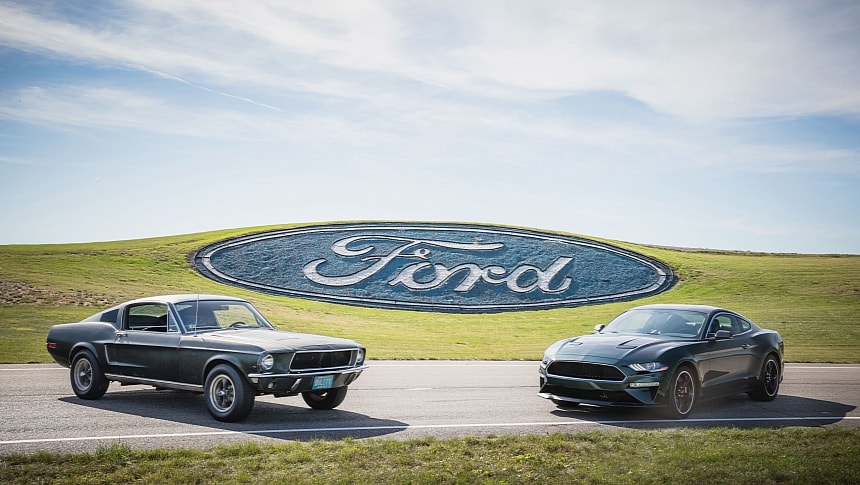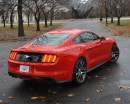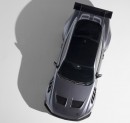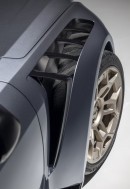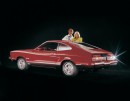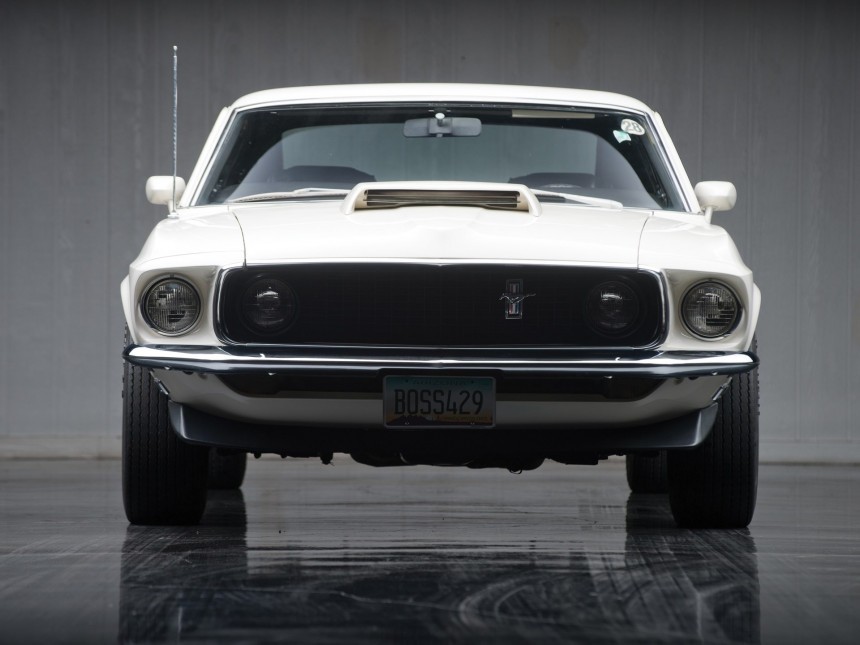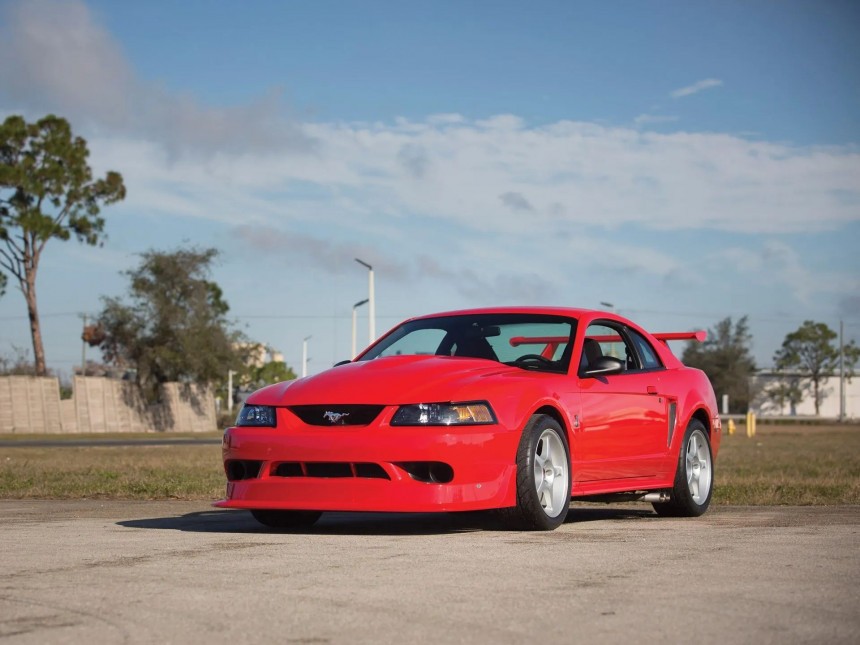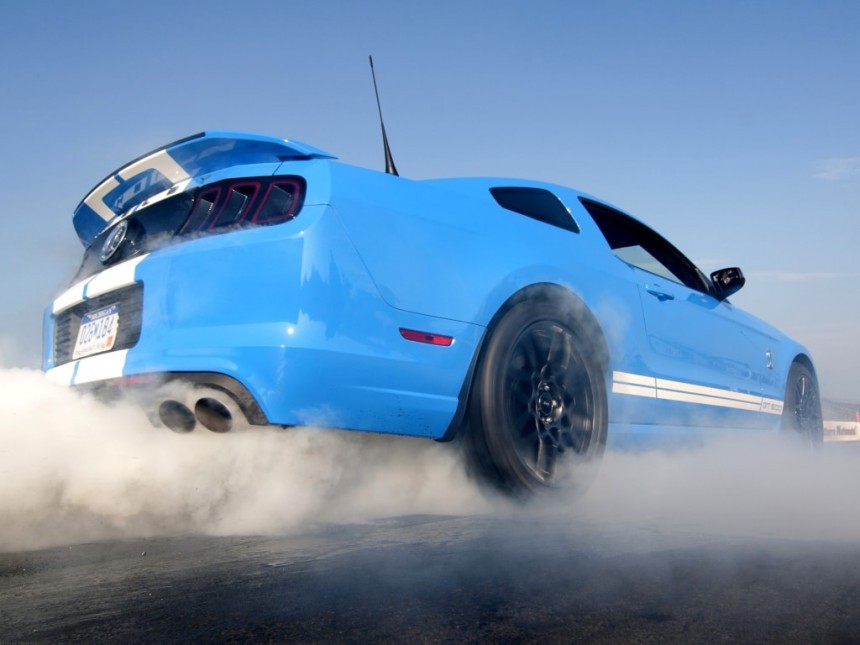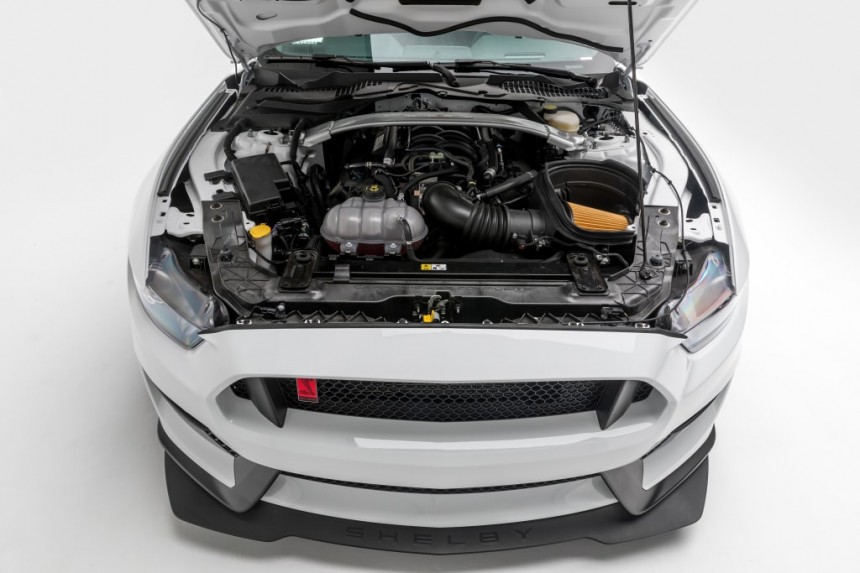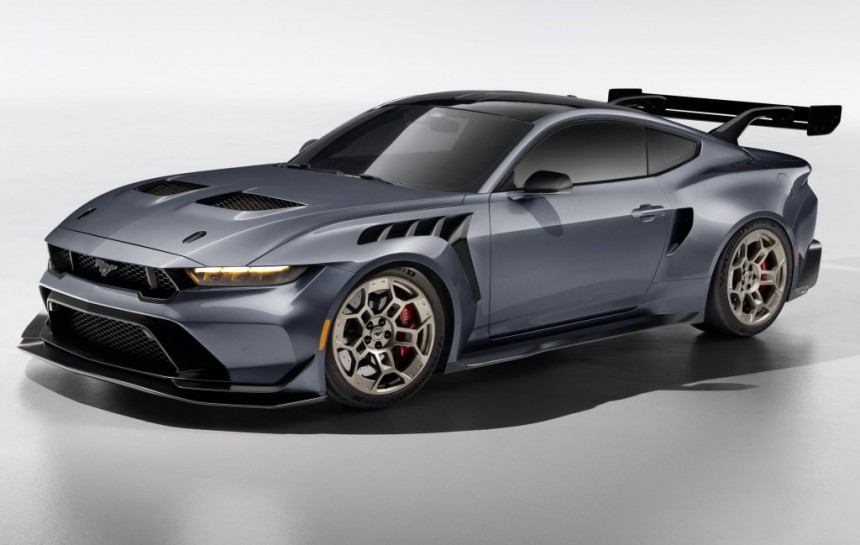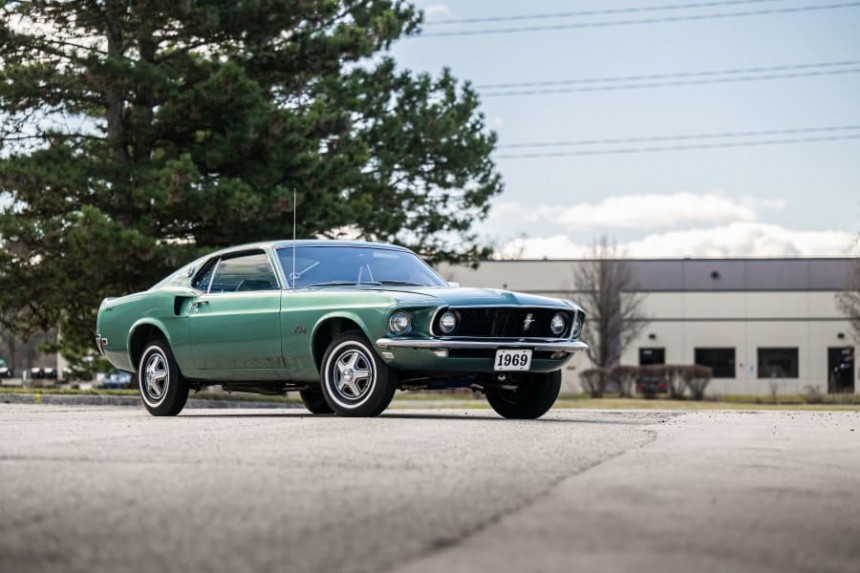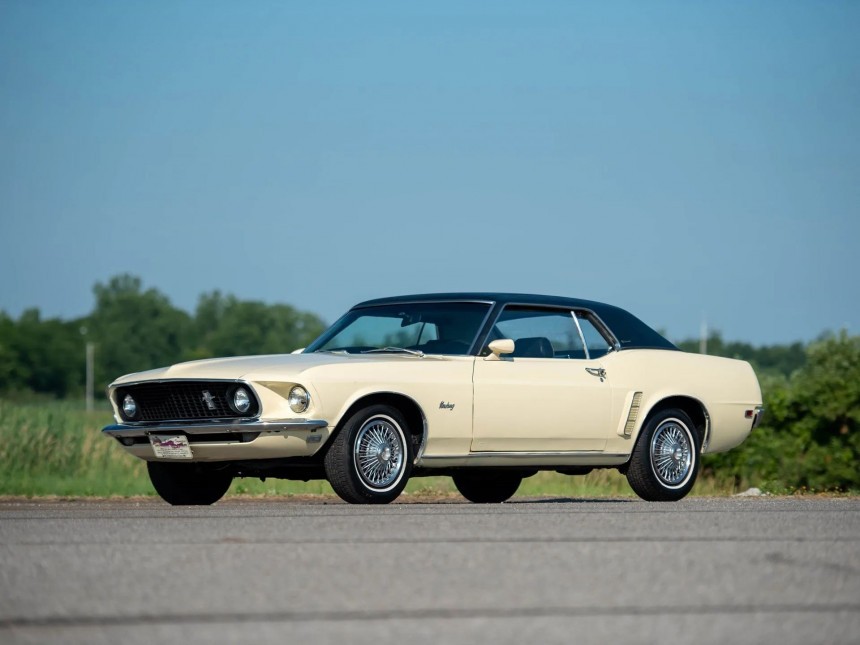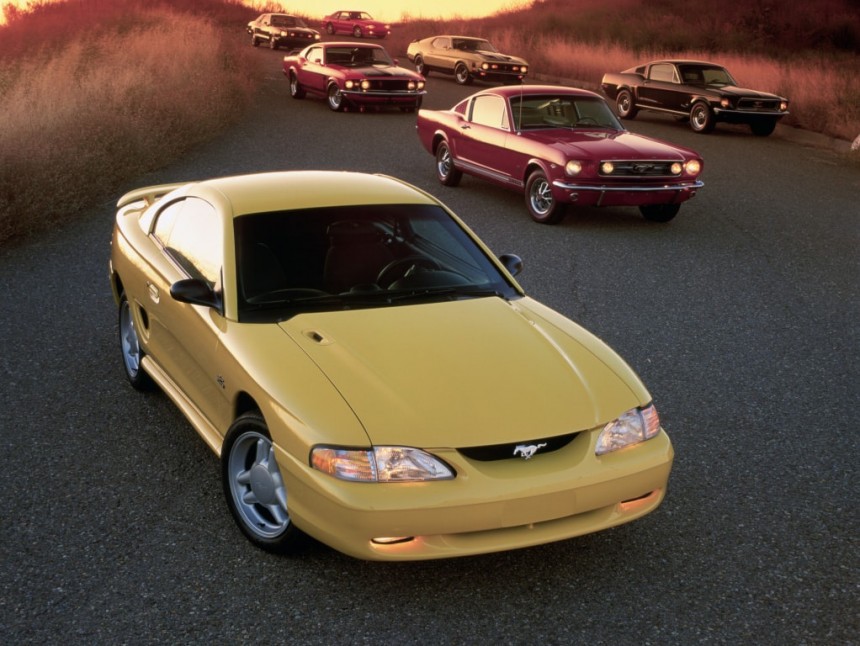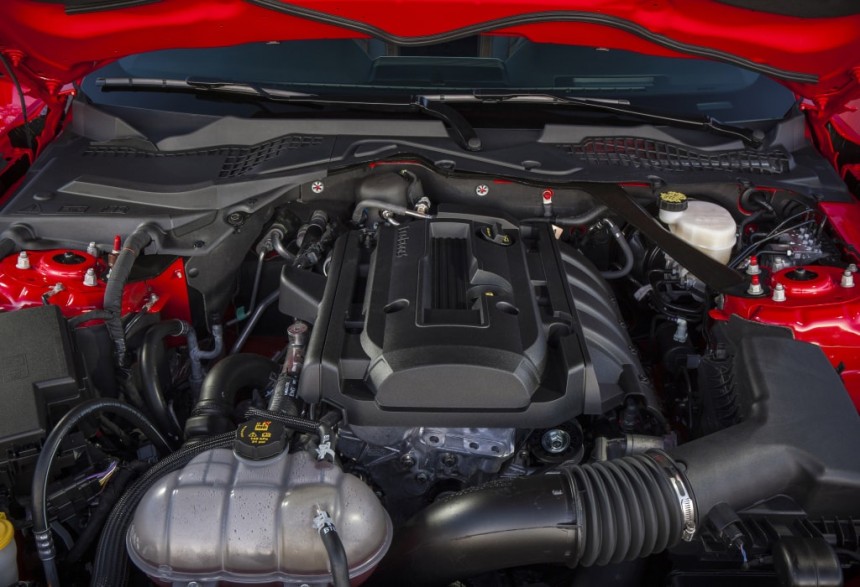In production since March 1964, the pony car that started it all used to sell in the hundreds of thousands back in the good ol' days of leaded gasoline and no emission controls. Think 607,568 deliveries in 1966 compared to a meager 48,605 units in 2023. SUVs and trucks may be way more popular nowadays, but even so, Mustang is America's and the world's best-selling sports car.
Why is that? For starters, relative affordability. Emphasis on relative because the US annual salary was nearly $60,000 in Q4 2023 and the 2024 Ford Mustang EcoBoost starts at $30,920. This relative affordability can be traced back to the first of seven generations, which is based on the humble Falcon.
The Mustang also has the looks and the brawn as well. Ever since it gained independent rear suspension (temporarily with the SVT Cobra and permanently with the sixth gen), the Mustang also handles like a charm. In the hands of those who know how to keep the rear end in check, that is. Being a Ford, it further makes plenty of sense in regard to maintenance, service, and repair costs.
Do remember that Mustang's reputation was built on the racetrack as well. Six decades and seven generations down the line, the Ford Motor Company treated us to many great feral horses and quite a few awful ones, including the completely pointless Mustang E. Before going into that fuel economy-oriented atrocity, let's talk about five of the greatest 'Stangs eligible to wear a license plate.
The Greatest
Similarly to the Boss 302, the Boss 429 is a homologation special. Dearborn's favorite son was required to produce 500 units, yet Kar Kraft just under 1,360 units over two years. Lovingly dubbed Boss Nine by enthusiasts and collectors alike, the 7.0-liter coupe wouldn't have been possible without inputs from renowned automotive designer Larry Shinoda and muscle car pioneer Bunkie Knudsen.
As you might have guessed by now, the 429 in the model's name stands for cubic inches. What makes the Boss 429 stand out from other members of the 385 engine family is the pair of staggered-valve aluminum cylinder heads with semi-hemispherical combustion chambers. Ford officially claimed 375 horsepower and 450 pound-feet (610 Nm) of torque, but Ford was unsurprisingly sandbagging.
You can easily tell a 1969 model apart from a 1970 by looking at the hood scoop. 1969s came with body-color scoops, while 1970s featured matte-black paint. Under the hood, the biggest difference was the switch from a hydraulic lifter camshaft to a mechanical unit due to its much simpler design.
The comfier, better-equipped Terminator Cobra may have a cooler name, but the 2000 Cobra R is the Cobra to have. From the in-your-face rear wing to the side-exiting dual exhaust and racing seats, it surely was the bee's knees. The limited-run track warrior with New Edge styling cues was the only hi-po Mustang that year, and – in stark contrast to current Mustangs – you couldn't get an auto.
More at home on road courses than on the drag strip, the 2000 Ford Mustang SVT Cobra R came in Performance Red paint exclusively. Being a track-oriented machine, Special Vehicles Team didn't bother giving it rear seats, power windows, or air conditioning. Purposeful would be a highly appropriate word to describe this iconic pony.
$54,995 in 2000 dollars would be a little over $99,100 nowadays. Huge money for a 'Stang with a cast-iron block associated with trucks rather than performance cars. However, the 5.4-liter Modular V8 of the 2000 model year Cobra R is anything but a truck engine. Instead of the declared 385 horsepower at the crankshaft, dyno tests from that period indicated 385 horses at the rear wheels.
Serving as the successor to the Terminator Cobra, the S197-generation Shelby GT500 launched for model year 2007 with 500 stallions from a displacement of 5.4 liters. The SVT division worked its magic yet again for model year 2010, upping the GT500's engine to 540 horsepower.
The switch to a lighter aluminum block followed suit in 2011, then Ford sent off the S197 with the first-ever Mustang capable of cracking 200 miles per hour from the factory. If you prefer metric, that would be 322 kilometers per hour. The 2013 to 2014 model year Shelby GT500 is a 662-horsepower monster that can hold its own in the corners.
Ford Motor Company marked the 20th anniversary of the Special Vehicle Team with the 2013 Shelby GT500 Convertible, which is limited to 155 miles per hour (250 kilometers per hour). At the time, the supercharged and intercooled 5.8-liter Trinity engine was the most powerful production V8.
102 horsepower per liter is one thing, but a redline of 8,250 rpm makes the S550-generation Shelby GT350 a hugely exhilarating pony. The Flat Rock assembly plant in Michigan produced two versions of the handling-focused coupe, with the Shelby GT350R being the more extreme of the two.
Only 37 units were produced in the first year in homage to the competition model of 1965. Key differences between the GT350 and GT350R include the latter's carbon-fiber wing and slightly larger splitter, along with carbon-fiber wheels for the stickier tires. The carbon-fiber wheels reduce weight by 60 pounds (27 kilograms) over the aluminum wheels of the Shelby GT350.
Ford also cut unwanted weight by deleting the rear seat, rearview camera, floor mats, air con, audio system, infotainment system, and exhaust resonators. A bit extreme for a road car, innit? The Blue Oval understood that quite a few people wouldn't even consider the R because of this, which is why prospective customers were presented with the Electronics Package. Priced at 3,000 bucks, it added A/C, seven speakers, and SYNC 3.
Easily the most extreme road-legal Mustang of all time, GTD is on a different level altogether from any other high-performance Mustang. What kind of level are we dealing with? Believe it or not, Ford is benchmarking this fellow against the 991.2-gen 911 GT2 RS and the C190 AMG GT Black Series.
Rather than Flat Rock, assembly will be handled by Multimatic in Canada. You know, the guys and gals who also made the V6-powered GT supercar. The first road-going Mustang with dry-sump lubrication features dual air inlets and redlines at more than 7,500 revolutions per minute. How much more is a secret at the moment of writing, but given the naturally aspirated 5.2-liter Voodoo in the S550-gen GT350 twins, aural pleasure is on the menu.
There is no trunk space to speak of due to semi-active multilink rear suspension, a hydraulic control system, and a cooling system for the dual-clutch transaxle. $300,000 is the estimated starting price announced by Ford, which makes the GTD the most expensive production Mustang of them all.
The Most Dreadful
Not to be confused with the sacrilegious Mustang Mach-E, which is more Escape crossover than Mustang fastback in terms of underpinnings, Mustang E is peculiar in many respects. A one-year-only special edition developed specifically to compete in the Mobilgas Economy Run, the Mustang E hides a 250-cube sixer underhood.
Undesirable yet understandable in the Falcon, the 250-ci engine in the Mustang E was connected to a three-speed automatic with a high-stall torque converter and extremely high rear gearing. As opposed to the 3.91:1 final drive of the Boss Nine, this oddity of a Mustang rocks 2.33:1 gearing.
Pathetically slow (13.3 seconds) to 60 miles per hour (97 kilometers per hour), this oddball covers the quarter mile in a pedestrian 18.1 seconds. Ford didn't even get the chance to demonstrate the Mustang E at the Mobil-sponsored Mobilgas Economy Run. According to Mecum Auctions, the only surviving example is VIN 9F02L128388.
The hardtop-bodied Grande was launched for the model year 1969. It got faux wood trim, door panel courtesy lights, hopsack cloth inserts for the vinyl bucket seats, bright pedals, wire-style wheel covers, two-tone narrow tape strips, and – get this – a staggering 55 pounds (almost 25 kilograms) of extra sound deadening. Optional extras? The worst of the bunch was the leather-like vinyl roof, which completely defeats the purpose of a sporty car.
Ford also tuned the suspension for a more compliant ride. The greatest tragedy, however, is that people actually bought this abomination. The Dearborn-based automaker produced 22,182 units in 1969 and 25,274 in 1973, with prices ranging between 2,849 and 2,946 dollars. Adjusted for inflation, that would be $24,090 and $20,590.
The Grande paved the way for the shag-carpeted Ghia, a package that carried over to the third-generation pony car. Alejandro de Tomaso sold his shares in the Italian design and coachbuilding company to Ford in 1970, then FoMoCo slowly reduced Ghia to a shadow of its former self.
Mustang II was a child of the Malaise Era, a period of untold misery for enthusiasts of all things pony and muscle cars. From the reduced compression ratio to unleaded gasoline and emission controls, Malaise Era was the lowest of low points.
It would be foolish to blame Ford for the underpowered engine choices, including a 140-cube I4 and a 171-cube V6. But from the standpoint of styling, the Mustang II can be summed up in two words: yucky and yuppy. The Mustang II had to wait until 1975 to receive a V8 in the form of the 140-hp 302 Windsor. For reference, the most powerful 1975 Corvette made 205 horsepower.
The pony car's performance appeal wouldn't return until the 1980s, a decade of renaissance for the Mustang. It's hard to believe that Ford execs originally intended to replace the Fox-body Mustang with a front-drive model. Public outcry was immediate, which is why the front-paw-drive project eventually morphed into the Probe.
Yours truly and plenty others have a soft spot for the SN95, but on the other hand, I never had a thing for the pre-New Edge S95 Mustang. Put it this way: a selection of heavy-handed soft lines or sharp contours, a few creases here and there in the sheet metal, and four pronounced wheel arches?
Looking at the glass half full, the pre-facelift SN95 Mustang is more impressive under the skin, partly because Ford engineers worked day and night to increase the structural rigidity over the Fox body without adding weight. For a 1990s sports car, the design of the interior isn't too shabby either.
The first iteration of the SN95 is hardly a looker, but we critical folks also understand that it's an unsung hero of sorts. As mentioned earlier, the SN95 proved that enthusiasts and prospective customers prefer the Mustang with rear-wheel drive instead of front-wheel-drive underpinnings from Mazda. The Probe sold relatively well, but had it been called Mustang, chances are Ford might have pulled the plug after two or maybe three years at best.
There's nothing wrong with the 2.3-liter EcoBoost four-pot turbo in the Ranger. The same can be said about the 3.7-liter Cyclone free-breathing sixer of the 2011 to 2014 model year F-150. Be that as it may, a Mustang with anything other than a V8 engine is better suited for airport car rentals.
In late 2020, the peeps at Ford Europe decided to pull the 2.3-liter EcoBoost from the Old Continent due to abysmal customer demand. Turns out EcoBoost accounted for 15 percent of Mustang sales in the UK, which is hardly surprising. As a European myself, I cannot imagine spending a stack of euros on an American sports car that sounds nothing like the Mustangs I grew up with.
In Ford's defense, the six-cylinder Mustang was a necessary evil, and the four-cylinder Mustang continues to be one. 1973 oil crisis and corporate average fuel economy standards, anyone? Also, in Ford's defense, the second-largest American automaker continues making a V8 sports car with a manual. The same cannot be said about General Motors and Stellantis, who discontinued the sixth-gen Camaro and L-platform Dodge Challenger in late 2023.
The Mustang also has the looks and the brawn as well. Ever since it gained independent rear suspension (temporarily with the SVT Cobra and permanently with the sixth gen), the Mustang also handles like a charm. In the hands of those who know how to keep the rear end in check, that is. Being a Ford, it further makes plenty of sense in regard to maintenance, service, and repair costs.
Do remember that Mustang's reputation was built on the racetrack as well. Six decades and seven generations down the line, the Ford Motor Company treated us to many great feral horses and quite a few awful ones, including the completely pointless Mustang E. Before going into that fuel economy-oriented atrocity, let's talk about five of the greatest 'Stangs eligible to wear a license plate.
The Greatest
1969–1970 Mustang Boss 429
As you might have guessed by now, the 429 in the model's name stands for cubic inches. What makes the Boss 429 stand out from other members of the 385 engine family is the pair of staggered-valve aluminum cylinder heads with semi-hemispherical combustion chambers. Ford officially claimed 375 horsepower and 450 pound-feet (610 Nm) of torque, but Ford was unsurprisingly sandbagging.
You can easily tell a 1969 model apart from a 1970 by looking at the hood scoop. 1969s came with body-color scoops, while 1970s featured matte-black paint. Under the hood, the biggest difference was the switch from a hydraulic lifter camshaft to a mechanical unit due to its much simpler design.
2000 Mustang SVT Cobra R
More at home on road courses than on the drag strip, the 2000 Ford Mustang SVT Cobra R came in Performance Red paint exclusively. Being a track-oriented machine, Special Vehicles Team didn't bother giving it rear seats, power windows, or air conditioning. Purposeful would be a highly appropriate word to describe this iconic pony.
$54,995 in 2000 dollars would be a little over $99,100 nowadays. Huge money for a 'Stang with a cast-iron block associated with trucks rather than performance cars. However, the 5.4-liter Modular V8 of the 2000 model year Cobra R is anything but a truck engine. Instead of the declared 385 horsepower at the crankshaft, dyno tests from that period indicated 385 horses at the rear wheels.
2013–2014 Shelby GT500
The switch to a lighter aluminum block followed suit in 2011, then Ford sent off the S197 with the first-ever Mustang capable of cracking 200 miles per hour from the factory. If you prefer metric, that would be 322 kilometers per hour. The 2013 to 2014 model year Shelby GT500 is a 662-horsepower monster that can hold its own in the corners.
Ford Motor Company marked the 20th anniversary of the Special Vehicle Team with the 2013 Shelby GT500 Convertible, which is limited to 155 miles per hour (250 kilometers per hour). At the time, the supercharged and intercooled 5.8-liter Trinity engine was the most powerful production V8.
S550 Shelby GT350R
Only 37 units were produced in the first year in homage to the competition model of 1965. Key differences between the GT350 and GT350R include the latter's carbon-fiber wing and slightly larger splitter, along with carbon-fiber wheels for the stickier tires. The carbon-fiber wheels reduce weight by 60 pounds (27 kilograms) over the aluminum wheels of the Shelby GT350.
Ford also cut unwanted weight by deleting the rear seat, rearview camera, floor mats, air con, audio system, infotainment system, and exhaust resonators. A bit extreme for a road car, innit? The Blue Oval understood that quite a few people wouldn't even consider the R because of this, which is why prospective customers were presented with the Electronics Package. Priced at 3,000 bucks, it added A/C, seven speakers, and SYNC 3.
S650 Mustang GTD
Rather than Flat Rock, assembly will be handled by Multimatic in Canada. You know, the guys and gals who also made the V6-powered GT supercar. The first road-going Mustang with dry-sump lubrication features dual air inlets and redlines at more than 7,500 revolutions per minute. How much more is a secret at the moment of writing, but given the naturally aspirated 5.2-liter Voodoo in the S550-gen GT350 twins, aural pleasure is on the menu.
There is no trunk space to speak of due to semi-active multilink rear suspension, a hydraulic control system, and a cooling system for the dual-clutch transaxle. $300,000 is the estimated starting price announced by Ford, which makes the GTD the most expensive production Mustang of them all.
The Most Dreadful
1969 Mustang E
Undesirable yet understandable in the Falcon, the 250-ci engine in the Mustang E was connected to a three-speed automatic with a high-stall torque converter and extremely high rear gearing. As opposed to the 3.91:1 final drive of the Boss Nine, this oddity of a Mustang rocks 2.33:1 gearing.
Pathetically slow (13.3 seconds) to 60 miles per hour (97 kilometers per hour), this oddball covers the quarter mile in a pedestrian 18.1 seconds. Ford didn't even get the chance to demonstrate the Mustang E at the Mobil-sponsored Mobilgas Economy Run. According to Mecum Auctions, the only surviving example is VIN 9F02L128388.
1969–1973 Mustang Grande
Ford also tuned the suspension for a more compliant ride. The greatest tragedy, however, is that people actually bought this abomination. The Dearborn-based automaker produced 22,182 units in 1969 and 25,274 in 1973, with prices ranging between 2,849 and 2,946 dollars. Adjusted for inflation, that would be $24,090 and $20,590.
The Grande paved the way for the shag-carpeted Ghia, a package that carried over to the third-generation pony car. Alejandro de Tomaso sold his shares in the Italian design and coachbuilding company to Ford in 1970, then FoMoCo slowly reduced Ghia to a shadow of its former self.
All Second-Generation Mustangs
It would be foolish to blame Ford for the underpowered engine choices, including a 140-cube I4 and a 171-cube V6. But from the standpoint of styling, the Mustang II can be summed up in two words: yucky and yuppy. The Mustang II had to wait until 1975 to receive a V8 in the form of the 140-hp 302 Windsor. For reference, the most powerful 1975 Corvette made 205 horsepower.
The pony car's performance appeal wouldn't return until the 1980s, a decade of renaissance for the Mustang. It's hard to believe that Ford execs originally intended to replace the Fox-body Mustang with a front-drive model. Public outcry was immediate, which is why the front-paw-drive project eventually morphed into the Probe.
Pre-New Edge SN95 Mustang
Looking at the glass half full, the pre-facelift SN95 Mustang is more impressive under the skin, partly because Ford engineers worked day and night to increase the structural rigidity over the Fox body without adding weight. For a 1990s sports car, the design of the interior isn't too shabby either.
The first iteration of the SN95 is hardly a looker, but we critical folks also understand that it's an unsung hero of sorts. As mentioned earlier, the SN95 proved that enthusiasts and prospective customers prefer the Mustang with rear-wheel drive instead of front-wheel-drive underpinnings from Mazda. The Probe sold relatively well, but had it been called Mustang, chances are Ford might have pulled the plug after two or maybe three years at best.
All Mustangs With Fewer Than Eight Cylinders
In late 2020, the peeps at Ford Europe decided to pull the 2.3-liter EcoBoost from the Old Continent due to abysmal customer demand. Turns out EcoBoost accounted for 15 percent of Mustang sales in the UK, which is hardly surprising. As a European myself, I cannot imagine spending a stack of euros on an American sports car that sounds nothing like the Mustangs I grew up with.
In Ford's defense, the six-cylinder Mustang was a necessary evil, and the four-cylinder Mustang continues to be one. 1973 oil crisis and corporate average fuel economy standards, anyone? Also, in Ford's defense, the second-largest American automaker continues making a V8 sports car with a manual. The same cannot be said about General Motors and Stellantis, who discontinued the sixth-gen Camaro and L-platform Dodge Challenger in late 2023.
